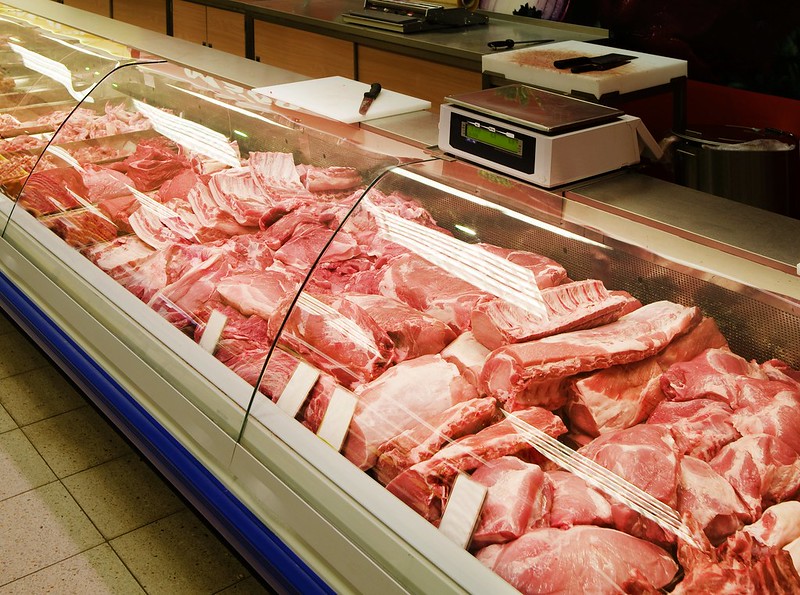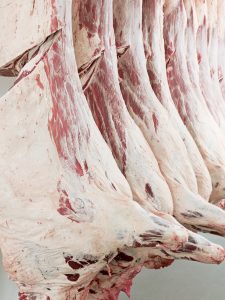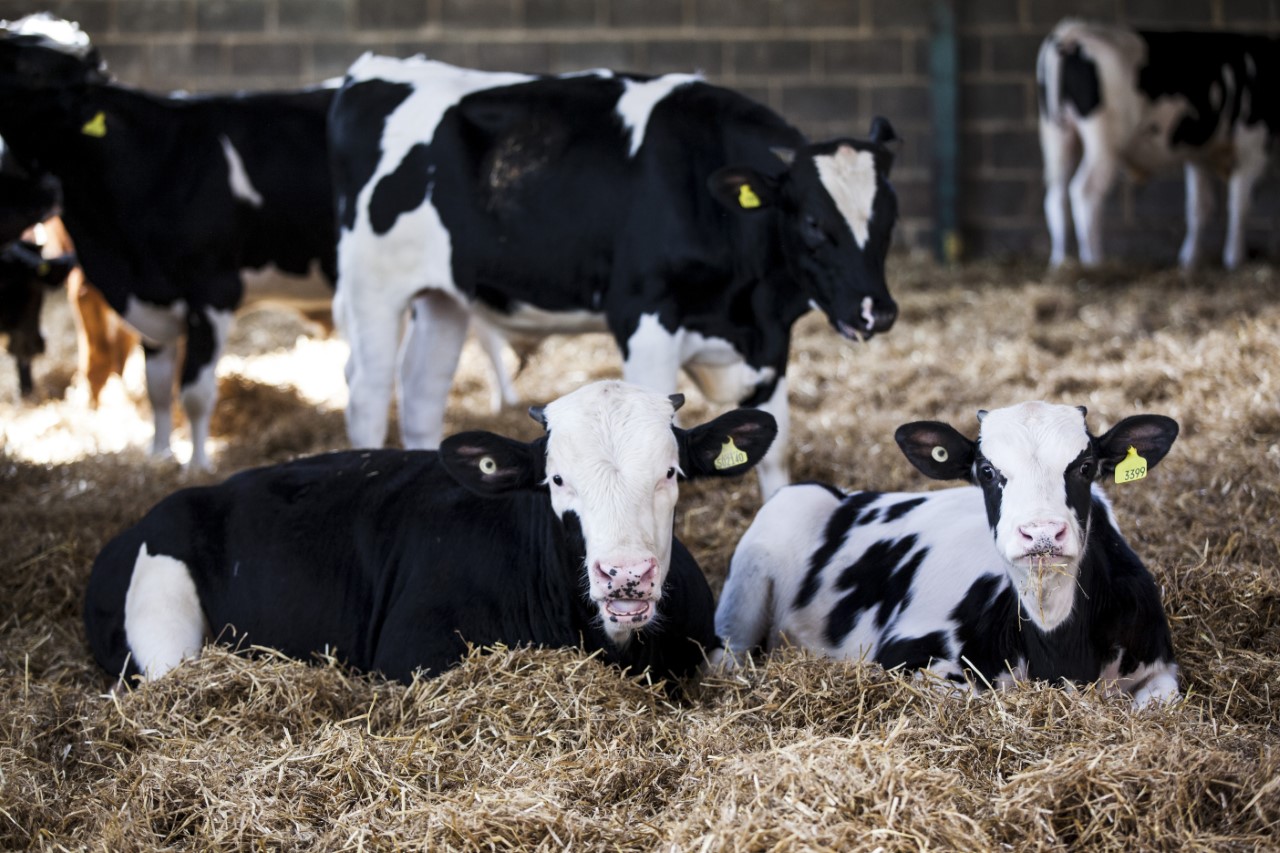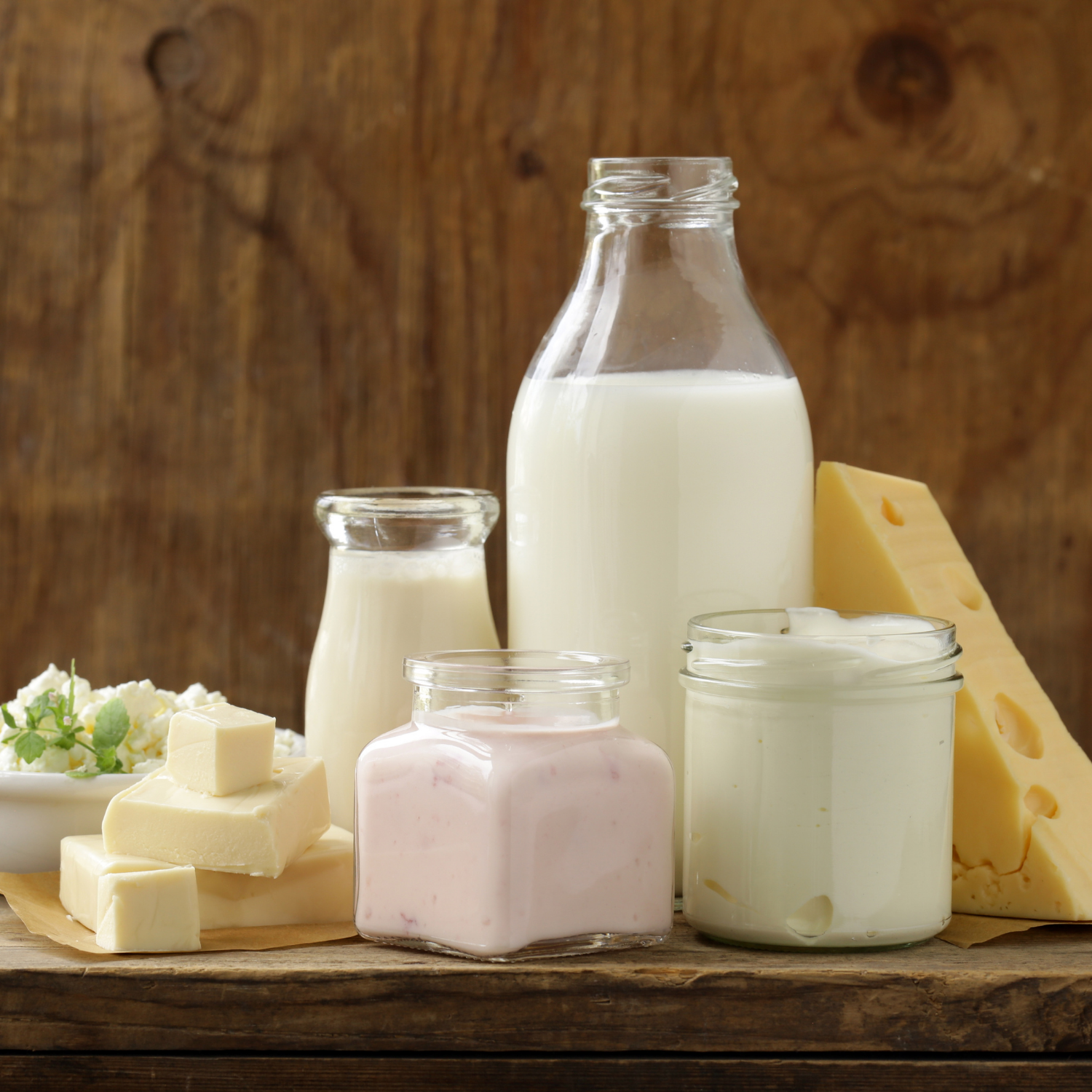



Weekly beef and dairy digest: US ag sector could see major policy shifts
USDA Secretary Tom Vilsack testified before Congress this week and hinted at his policy priorities for the agency and the wider US farm sector.News from the US beef industry
US Senate to hold hearing on cattle industry
Senator Chuck Grassley (R-Iowa) tweeted: “GR8 NEWS Ag Cmte answering my calls 2hold a hearing on 23 June on unfairness in cattle market/industry +need for transparency This is opportunity to educate senators/public on the dire issues family farmers r facing while up against Big Cattle/ 4 packers control 80% of market.”
USDA Secretary suggests US livestock industry to see changes coming
It was clear listening to USDA Secretary Tom Vilsack, in testimony to Congress this week, that big changes are coming to the livestock sector, notably for meat processors and livestock pricing. Vilsack emphasized USDA plans to bolster small-, medium-sized meat and poultry processors and to expand overall processing capacity. He suggested farmers are being unfairly hurt by the patent protection that their suppliers enjoy, implying that was discouraging competition in the seed business. Vilsack thinks input costs are one reason many farmers can't support themselves on farm income, but patent protection was also contributing to the problem.

“We've got to do more for our cattlemen, the concentration in the processing end is too high. We need more pricing transparency, more competition,” stressed subcommittee Ranking Member John Hoeven (R-North Dakota). Vilsack signaled he agreed with those sentiments and pointed to USDA’s plans to revisit rulemaking around the Packers and Stockyards Act (PS&A) as one response the department is taking.
“The spring regulatory agenda did indicate our desire to strengthen Packers and Stockyards to begin that process to draw bright lines and clear lines in terms of what is appropriate and what is not,” Vilsack pointed out. USDA was looking at offering low-interest loans for new processing facilities, the secretary added.
In terms of price discovery, Vilsack said USDA efforts to bolster meat processing capacity should have positive knock-on effects. “One way of getting price discovery is by having more processing capacity and more processing facilities getting more data and information,” he explained. “I think you will see over the course of the summer that we have a pretty unique approach to this that I think will result in significant expansion of processing.” One key to those plans, said Vilsack, is leveraging federal, state, and private industry resources in partnership to lay the foundation for a meat processing expansion.
Senator John Tester (D-Montana) said one issue facing livestock markets, like the broader ag sector, is rising consolidation in the industry. Tester asked Vilsack to weigh in on bipartisan legislation he introduced with Sen. Chuck Grassley (R-Iowa), the Meat Packing Special Investigator Act, that would create an “Office of the Special Investigator for Competition Matters” within the USDA’s Packers and Stockyards Division, with subpoena power to investigate issues around market competition.
“I think it is a good proposal, I think it is part of what needs to be done,” Vilsack responded. “Clearly [regarding the PS&A], the lines need to be very specifically strengthened and drawn so that it's clear what is an undue preference, it’s clear what is unfair practices, it’s clear what the scope of work ought to be, and it’s clear what competition standard we have to reach.”

Tester and Sen. Jerry Moran (R-Kan.) asked Vilsack about implementation of provisions providing $60 million in funds to help small- and medium-sized meat facilities meet federal inspection requirements — a prerequisite for interstate sales. Vilsack said the department intends to announce plans to implement the program soon. He said the department would be making announcements about funding for two small programs authorized to help small-scale processors. One would help processors qualify for federal inspection, which would enable them to sell across state lines and into export markets. Another would reduce the overtime fees that small processors must pay for federal inspection services.
Tester and Moran also emphasized the need to allow more state-inspected meat and poultry facilities sell products across state lines — including via USDA’s existing Cooperative Interstate Shipment (CIS) program. Vilsack said “the challenge is basically getting them to make sure that they have the equivalency in terms of inspection. And the reason this is important is because we don't want to basically create chaos in the export market.” Without such equivalency “we may have difficulty selling our beef and so forth, overseas,” he explained.
Meanwhile, Moran asked Vilsack about implementation of other relief provisions to lower federal meat inspector costs for small- and medium-sized meat processors. Vilsack said an announcement should come soon on that front as well, adding that he would like to expand the program further. “Our budget contains another $44 million that would allow that program to be expanded not just for year two, but for maybe up to five years of opportunity for those small and midsize producers,” Vilsack remarked.

Tester also raised the recent JBS cyberattack that took scores of the company’s meat processing facilities offline. “Can you just give us an idea of what you're doing around that with the Department of Justice [DOJ], or [otherwise]?” he asked Vilsack.
“The first order of business, I think, is to make sure that everyone in the food industry and food business understands the steps that they need to take to harden their systems,” Vilsack responded. He added that USDA intends to “convene food groups to make sure they understand and appreciate precisely what is required.” Regarding DOJ, he said USDA will be “more than happy to cooperate with any legal investigation.”
US beef export sales are down from last week
US beef net sales of 12,800 metric tonnes (MT) reported for 2021 were down 20% from the previous week and 36% from the prior four-week average. Increases primarily for Japan (4,400 MT, including decreases of 600 MT), China (3,600 MT, including decreases of 100 MT), South Korea (1,700 MT, including decreases of 500 MT), Taiwan (1,200 MT, including decreases of 200 MT), and Canada (600 MT, including decreases of 200 MT), were offset by reductions for Turks and Caicos Islands (100 MT).
Exports of 17,800 MT were down 16% from the previous week and 2% from the prior four-week average. The destinations were primarily to Japan (5,300 MT), South Korea (4,900 MT), China (3,000 MT), Taiwan (1,300 MT), and Mexico (1,000 MT).
Updates from Argentina
Deal to reopen Argentine beef exports reported near
With just days remaining before Argentina’s month-long ban on beef exports is set to lapse, a source with the office of President Alberto Fernandez told Reuters differences between policymakers and meat industry officials are “narrowing” and it’s “very possible an agreement will be reached.”
The unnamed source detailed, “We are seeking an agreement that would allow the meat export market to reopen while expanding production enough to guarantee domestic supplies as well. We want to cover both."
On Monday, Argentina’s production minister also told local television an agreement was close. Meanwhile, Cabinet Chief Santiago Cafiero told local Radio con Vos that meatpacking firms had made proposals to the government to keep domestic beef prices lower than global ones, but he said their terms still aren’t acceptable.

Latest news from the international dairy sector
Western European overview
Sources in Germany and France, the two largest EU milk producing countries, have come to believe that 2021 milk production may end the year slightly behind 2020. The slow start to 2021 may be hard to overcome as the first quarter is often the highest producing quarter in a year. However,
strong production in some other large Western European countries such as Italy and Ireland
is still expected to push the EU to higher 2021 milk production than 2020 production.
Eastern European overview
Czech Republic milk production January - April 2021 decreased 3.8% from January - April 2020 according to CLAL data made available to USDA. Other January – April 2021 production changes from January – April 2020 include cheese, +2.4%; butter, -8.4%, WMP +4.2%; and SMP -1.7%.
Australia overview
Australian bulk milk exports continue to increase. January – April 2021 bulk and packaged milk exports from Australia 86,000 MT, increased 26.7% from January – April 2020, according to CLAL data made available to USDA. China has been actively buying fluid milk from Australia.
New Zealand overview
Current milk production in New Zealand is near the annual low. The new dairy season began on June 1. Appreciable milk production increases are expected to begin to register during July, heading toward the typical peak in late October.

Reports on the US dairy market
- Butter: Grade AA closed at $1.7925. The weekly average for Grade AA is $1.7830 (-0.0070).
- Cheese: Barrels closed at $1.6725 and 40# blocks at $1.5000. The weekly average for barrels
is $1.6080 (+0.0149) and blocks, $1.4805(-0.0245). - Non-fat dry milk: Grade A closed at $1.3000. The weekly average for Grade A is $1.2970
(+0.0195). - Dry whey: Extra grade dry whey closed at $0.6275. The weekly average for dry whey is
$0.6135 (+0.0116).
Cheese highlights
Although spring flush is in the rearview mirror, milk availability for cheese production in the country has yet to receive the memo. Spot prices ranged from $6 to $5 under Class III in the Midwest, but all regions are running generally busy cheese production schedules to keep up with current milk supplies.
Retail demand notes vary from slow to busy. Food service orders have steadied, as well. Export sales, according to Western cheese contacts, have picked up due to the market price drops. Still, though, logistical issues with freight/shipping remain a stumbling block. Cheese availability has expectedly grown during flush season.
Cheese market prices are still "inverted" as barrel prices outpace those of blocks', but block prices are showing some resilience after dropping into the mid $1.40s midweek.
Butter highlights
Cream is available for butter making needs. Some butter making operations are running seasonally shorter production schedules. Other butter plants are keeping production steady and building inventories in advance of anticipated increases in demand this fall.
Retail sales remain weak. Food service demand is steady in the East and Central regions and strengthening in the West. Bulk butter prices range from 1.0 to 8.0 cents above market across the country this week.

Fluid milk
Milk output is steady to lower across the US as manufacturers work through available milk supplies. Class I demand is lower in much of the country, though orders are reportedly steady in Arizona. Class III demand is steady as cheese producers continue to run active schedules. Low crop yields are a concern for many due to widespread high temperatures and drought conditions. Condensed skim markets are steady. Cream supplies are available for production in the Midwest and the West. Ice cream production is reportedly mixed, with lower production in the East, Midwest, and Southwest. In the Northwest ice cream producers are running busy schedules.
Dry products
Low/medium heat non-fat dry milk (NDM) prices have decreased this week; contacts report that these lower prices have led to an uptick in demand. Production is active as producers have plenty of condensed skim milk. High heat NDM prices slipped at the top of the range in all regions, while also falling at the bottom in the West. Inventories are tight as manufacturers focus their drying times on low/medium heat.
Dry buttermilk prices are steady to lower, while inventories remain somewhat tight. Ice cream production is taking priority over the drying of condensed buttermilk. The bottom of the price range for dry whole milk moved higher as spot supplies are limited. In all regions the price range for dry whey has slipped lower. Inventories of dry whey remain steady to tight as production is mixed.
In the Northeast production is active, while lower in the Central and West regions. Whey protein concentrate 34% inventories are mixed as some report availability while inventories that meet strict specifications are tight. Production is less than optimal as manufacturers opt to produce higher concentrations. Prices for lactose are steady, as loads are moving well through contracts. Casein demand is strong as inventories remain tight.
TheCattleSite News Desk
IMPORTANT NOTE: I am not a futures broker and do not manage any trading accounts other than my own personal account. It is my goal to point out to you potential trading opportunities. However, it is up to you to: (1) decide when and if you want to initiate any traders and (2) determine the size of any trades you may initiate. Any trades I discuss are hypothetical in nature.
Here is what the Commodity Futures Trading Commission (CFTC) has said about futures trading (and I agree 100%): 1. Trading commodity futures and options is not for everyone. IT IS A VOLATILE, COMPLEX AND RISKY BUSINESS. Before you invest any money in futures or options contracts, you should consider your financial experience, goals and financial resources, and know how much you can afford to lose above and beyond your initial payment to a broker. You should understand commodity futures and options contracts and your obligations in entering into those contracts. You should understand your exposure to risk and other aspects of trading by thoroughly reviewing the risk disclosure documents your broker is required to give you.



